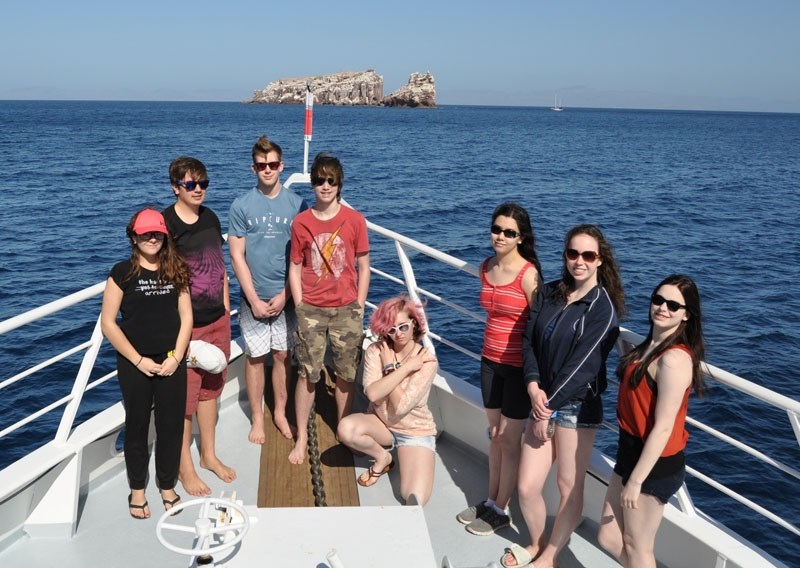A group of St. Albert students got to swim with the world’s biggest fish earlier this month as part of an educational trip to the Sea of Cortez.
About nine students at Ă©cole Secondaire Sainte Marguerite d’Youville spent eight days on a ship off the coast of La Paz, Mexico, exploring uninhabited islands and assisting with whale shark research from April 24 to May 1.
The school holds this trip every other year to teach students about biology, geology, and environmental stewardship, said teacher Kari Lagadyn, who has been on it seven times. The trip, organized by the group Panterra, is a for-credit activity that includes workbooks and a final exam.
Grade 11 student Rénée Hall said she first heard about the trip six years ago through her sister, and has been saving up for it for four years. (The trip costs $3,300 per student.)
“I’ve been waiting to go on it for a really long time.”
Grade 10 student Kalin Melnuk said he signed up to go due to his interest in biology and the once-in-a-lifetime chance to swim with whale sharks.
Students spent months prior to the trip gathering 18 suitcase-loads of donations for the students of La Paz, whom they met on their first day of the trip.
After having what student Mckenna Eklund described as “the best ice cream I’ve ever had,” the students boarded the 110-foot ship Adventure for their voyage into the Sea of Cortez – a mostly uninhabited region that is also a World Heritage Site.
Activities included hiking, snorkelling, kayaking, and photography, all with a running commentary from the two trained naturalists aboard.
Hall said she saw a considerable amount of wildlife on the trip – hundreds of sea lions, snowy egrets, brown pelicans, the magnificent frigatebird (a large black gull-like bird with bent, pointed, wings, a long forked tail, and, in males, a bright orange throat), and the famous blue-footed booby (known for its silly “look at my big blue feet” dance).
There was plenty of life in the water as well, including puffer fish, sea cucumbers, dolphins, and a trio of humpback whales. Two of the whales actually “torpedoed” (spun and jumped) out of the water, Melnuk noted.
But Melnuk said the highlight of the trip was the whale sharks.
Whale sharks are the world’s biggest fish and can grow up to 18 metres long, reports The Nature Conservancy. Little is known about them apart from the fact that they can migrate thousands of miles and likely live for up to 150 years. Despite having mouths as wide as a human is tall, these spotted creatures feed on tiny plankton.
The students said waters where they encountered the sharks were quite shallow, allowing them to get very close to them. Sometimes, the tips of their fins would poke above the surface.
“If we tried to, we could have touched them,” Melnuk said.
Eklund said it was pretty intimidating to get in the water with these giant sharks at first, and she had to remind herself that they were harmless.
“It was just amazing to be able to observe it.”
Hall said they also saw evidence of trash piled on shores, animals tangled in fishing lines, and heard that pesticides had been detected on whale sharks. She encouraged Albertans to reduce their pesticide use and to properly dispose of their waste.
“We all belong to the job of keeping animals safe. They are amazing creatures and they hold so many secrets that we don’t even know.”
Immersive education trips such as this help to engage students and give them experiences you can’t get in a classroom or zoo, Lagadyn said.
“Every waking moment, they’re learning something.”
She said the best part of the trip for her was seeing the look of enlightenment students get whenever they see a dolphin leap or a whale breach.
“These are experiences they’re never going to forget.”




